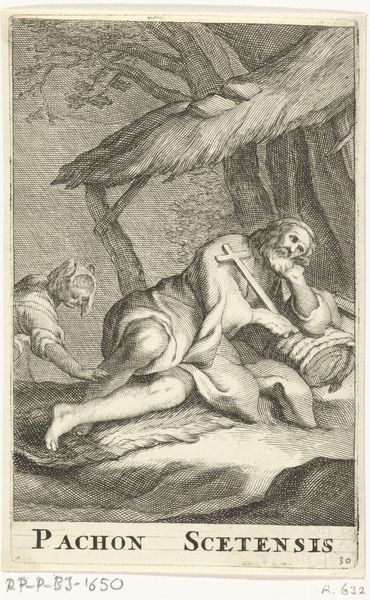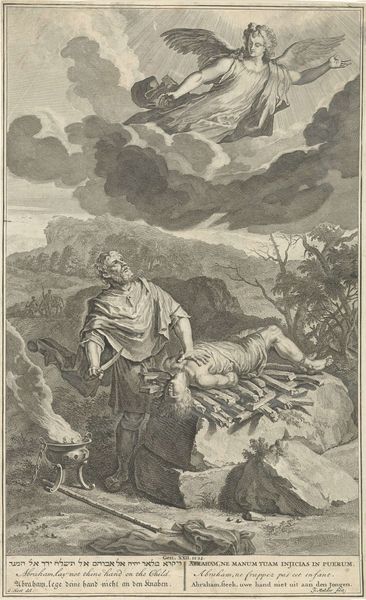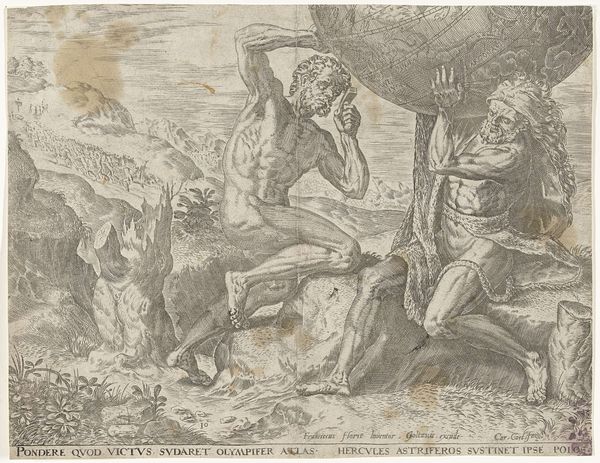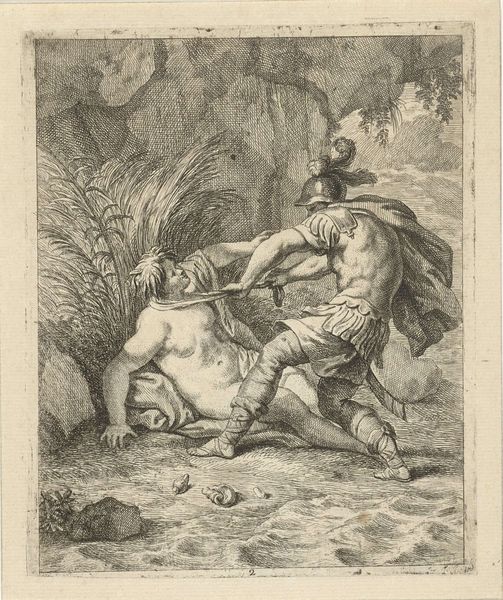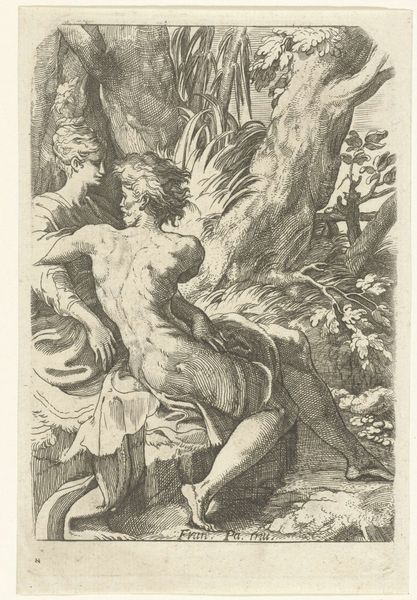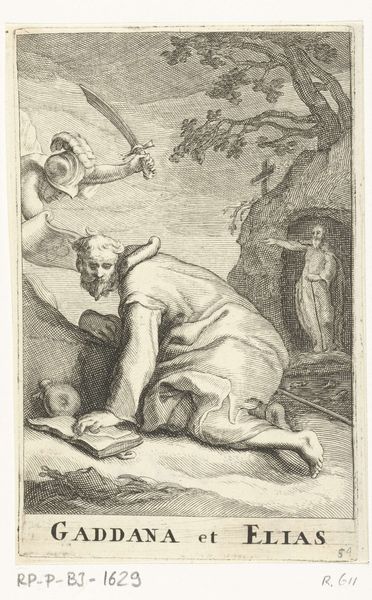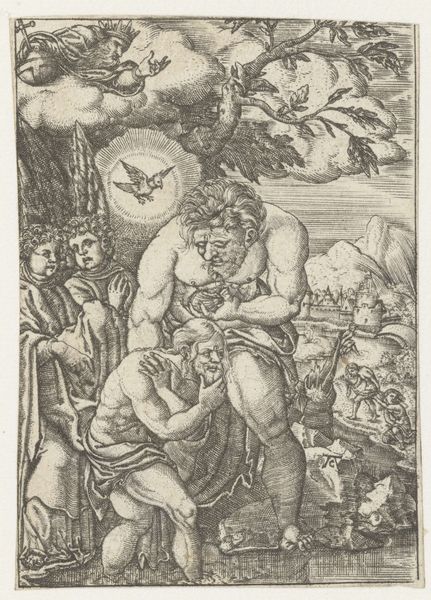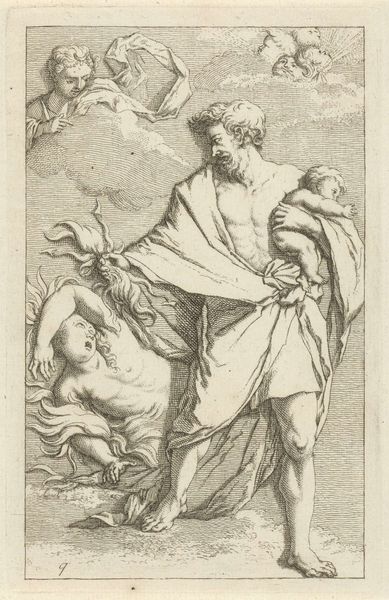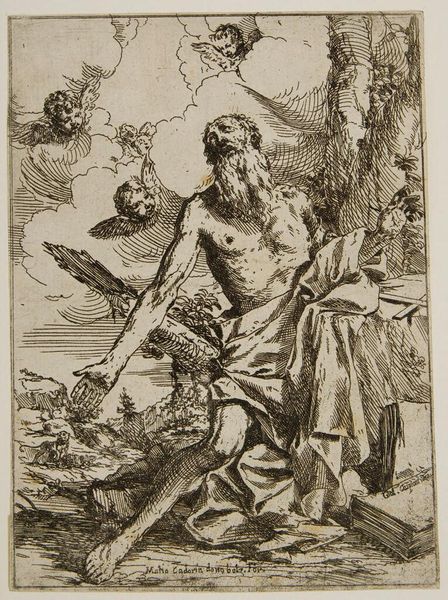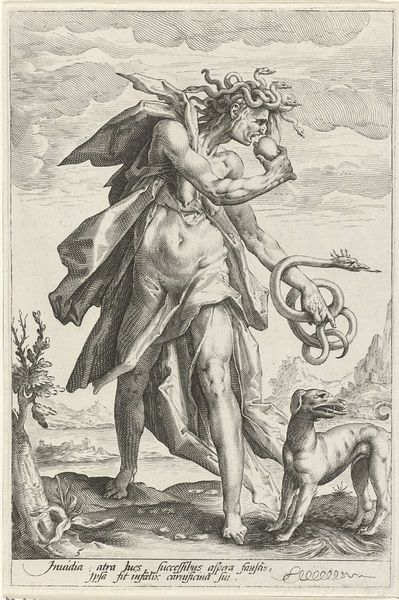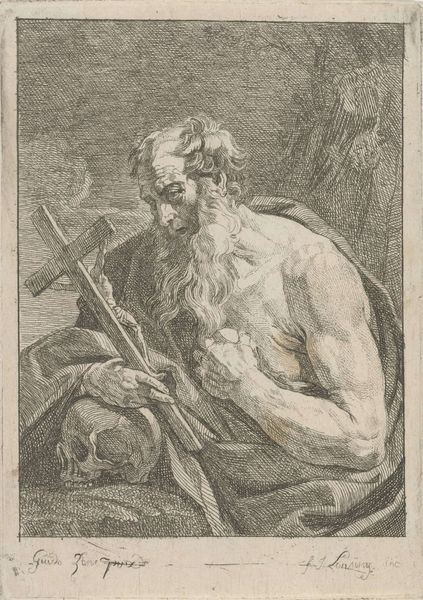
Dimensions: height 95 mm, width 70 mm
Copyright: Rijks Museum: Open Domain
Editor: So, here we have Annibale Carracci's "The Holy Jerome," created sometime between 1570 and 1609. It’s an etching, done with pen and ink. The saint looks very focused as he is working. What do you see in this piece that perhaps I’m missing? Curator: What strikes me is the performative aspect of this image. We see Saint Jerome, a key figure in the Catholic Church’s history, actively engaged in translating the Bible. However, consider who this image was meant to serve. Was it intended for the Church itself or a private patron? Knowing this can alter our interpretation. Editor: Interesting. So, the image itself has a purpose beyond just illustrating a saint. You mean it's supposed to communicate a specific idea depending on who would look at the artwork? Curator: Exactly. The fact that it's a print is important too. Prints allowed for wider dissemination of images. Was Carracci, or the person who commissioned this, trying to reinforce the authority of religious texts in a time of religious upheaval? The detail in the drawing shows some skills in portraying textures, no? The wrinkles, hair, the lion, all these require artistic proficiency and care. Editor: Yes, definitely! It's very intricate. So, by portraying Saint Jerome with such detail, the artist is legitimizing his importance but who is funding this artwork? What does that tell us about society and its views? Curator: That’s a fantastic question. By delving into patronage, we can understand the socio-political forces that shaped Carracci's work, and the image’s reception among different social classes. What this reveals of patrons’ motivations. Is there a parallel there for religious institutions today? Editor: I hadn't thought about it that way, analyzing who benefits from an artwork like this. This perspective really changes how I see its role in society back then, and how similar dynamics are still at play today. Curator: It's these dynamics between artistic expression and societal structures that make art history so compelling.
Comments
No comments
Be the first to comment and join the conversation on the ultimate creative platform.
